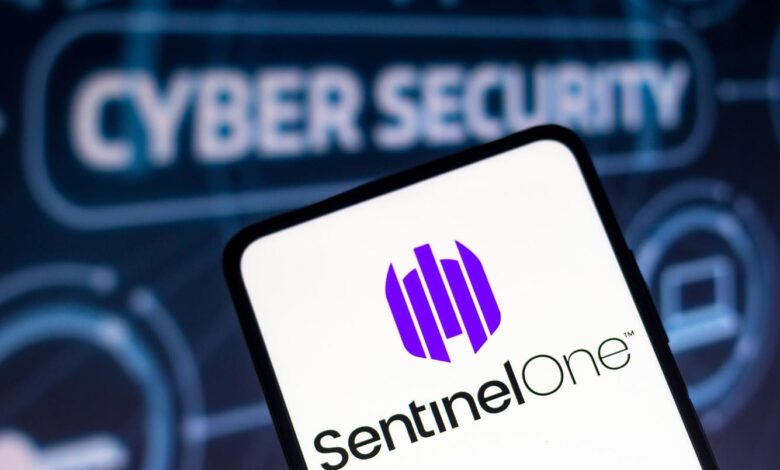SentinelOne Uses GenAI To Optimize Cybersecurity Operations

SentinelOne
SOPA Images/LightRocket via Getty Images
Generative AI is rapidly changing the way we interact and engage with technology. GenAI promises to simplify operations for cybersecurity teams and enable greater protection for enterprise infrastructure. It’s a powerful and natural use of large language models.
SentinelOne announced that its Purple AI offering is now generally available. Purple AI is an advanced AI-assisted platform that uses LLMs to streamline and enhance the efficiency of threat-hunting and cybersecurity operations.
By integrating SentinelOne’s real-time embedded neural networks with large language models for natural language processing, Purple AI allows security analysts to interact with the system in plain language, transforming complex cybersecurity data analysis into a simpler, more accessible task.
SentinelOne Purple AI
The core innovation of Purple AI is its ability to translate natural language questions into sophisticated queries—what SentinelOne refers to as PowerQueries—enabling deep analysis of logs and data from both native and third-party sources. This accelerates the threat-hunting process, investigations, and response times, allowing security teams to detect threats earlier, respond faster, and maintain a proactive stance against potential cyber-attacks.
One of Purple AI’s novel features is its investigation notebooks, which facilitate knowledge sharing and collaboration within security teams. The notebooks are auditable and shareable and act as a knowledge amplification tool that leverages the expertise of senior analysts to benefit the entire team.
By providing one-click hunting prompts, suggested queries, and the ability to conduct investigations using natural language, Purple AI simplifies threat hunting and maximizes the productivity and scalability of security operations centers.
Purple AI also emphasizes data protection and privacy by design, ensuring that it is never trained with customer data. It is built with the highest level of safeguards to protect user information. Its support for the Open Cybersecurity Schema Framework, or OCSF, provides analysts with a unified view of data, improving visibility and response capabilities across the cybersecurity landscape.
Purple AI is an excellent example of how AI can reduce the mean time to detect and respond to threats. By providing pre-populated threat hunting ‘quick starts’ and using the latest threat intelligence, analysts can begin their investigations with a single click, moving from hours to minutes in their response to emerging threats.
AI’s integration into cybersecurity through platforms like Purple AI brings benefits such as streamlined operations, enhanced team productivity, accelerated threat response times, and a more collaborative security environment. These advancements help security teams stay ahead of threats and ensure that cybersecurity measures are more effective, efficient, and scalable.
Analyst’s Take
SentinelOne’s Purple AI is a significant advancement that leverages the power of artificial intelligence to transform how security operations centers approach threat detection, analysis, and response. Purple AI promises to help organizations stay ahead of increasingly sophisticated cyber threats by automating and simplifying many aspects of the threat detection and response process.
The key technological innovation lies in Purple AI’s ability to understand and process these queries, facilitating deep log analysis and sophisticated threat-hunting capabilities across native and third-party data sources. SentinelOne’s approach promises to significantly reduce the barrier to effective cybersecurity practices, making advanced threat detection accessible to a broader range of professionals within an organization.
SentinelOne isn’t alone in using generative AI to simplify and enhance cybersecurity operations. AI promises to significantly transform the SIEM landscape, bringing capabilities that make these systems more intelligent, efficient, and capable of handling the complexity and volume of cybersecurity threats.
Microsoft, for example, offers its Security CoPilot as part of its Microsoft Sentinel solution. This generative AI-powered assistant integrates with Microsoft’s security ecosystem and third-party services. While both Microsoft and SentinelOne use AI to enhance cybersecurity, they do so with distinct approaches and focuses—SentinelOne on threat detection and response and Microsoft on broad security task assistance with AI-driven insights.
As cybersecurity threats continue to evolve in complexity and scale, deploying AI-powered tools like Purple AI will be critical in enabling organizations to protect themselves effectively.
SentinelOne’s Purple AI is at the forefront of integrating AI with cybersecurity, offering a tool that simplifies complex threat-hunting tasks, enhances productivity, and promotes knowledge sharing within SOCs. With Purple AI, SentinelOne makes advanced threat detection and response accessible to a broader audience, ensuring a more secure digital future.
Disclosure: Steve McDowell is an industry analyst, and NAND Research is an industry analyst firm that engages in, or has engaged in, research, analysis and advisory services with many technology companies, including those mentioned in this article. Mr. McDowell does not hold any equity positions with any company mentioned in this article.



